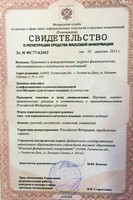
БАХТИН НА РАЗНЫЕ ГОЛОСА: ЭТНОГРАФИЧЕСКИЕ ЭТЮДЫ ОБ ИНТОНАЦИИ
Аннотация
Аннотация. В предисловии к подборке, составленной из двух аналитических этюдов, обосновывается обращение социальных исследователей к изучению голоса в его связи с социальными явлениями и процессами. Качественные социальные исследования характеризуются как эпистемологическая машина перевода устной речи в письменные тексты, доступные медленному анализу. А транскрипт рассматривается как условие возможности и инструмент современной социально-конструкционистской аналитики. Автор предисловия задается вопросом об условиях возможности возвращения в социальные исследования «забытого» в процессе перевода голоса. Внимание к несемиотическим аспектам человеческого существования, поворот к телу и аффекту, исследование бессловесных социальных миров рассматриваются как основания для аналитической реставрации голоса. Однако интонационная траектория авторов этой подборки иная: она восходит к их опыту подготовки транскриптов интервью в исследовательском цифровом проекте и обнаруживает связь с наследием Бахтина.
Ключевые слова: голос, интонация, качественные исследования, эпистемология.
DOI 10.23683/2415-8852-2017-4-46-57
 Цитировать:
Цитировать:
Орлова Г.А. Бахтин на разные голоса: этнографические этюды об интонации // Практики и интерпретации: журнал филологических, образовательных и культурных исследований. 2017. Т. 2, № 4. С. 46‒57.
Полный текст:
PDFЛитература
Булгакова, О. Голос как культурный феномен. М.: Новое литературное обозрение, 2015.
Булычев, К. Кому это нужно? М.: РИФ, 1991.
Касаткина, А. Исследовательское интервью и открытый электронный архив: трансформация метода, новая технология представления, архив как место встречи // Векторы развития современной России. От формирования ценностей к изобретению традиций. Материалы XIII Междунар. науч.практ. конф. молодых ученых. 11–12 апреля 2014 года / Под общ. ред. М.Г. Пугачевой. М.: Дело, 2015. С. 238–249.
Касаткина, А. Разговор на экране: трансформация политик транскрибирования в Обнинском цифровом проекте // Знание на экране: новые режимы видимости в социогуманитаристике. Материалы III цифрового коллоквиума. Москва. ШАГИ РАНХиГС. 9 – 10 декабря 2016. С. 23–24. Орлова, Г.А. Собирая проект // ШАГИ / STEPS. 2016a. 2(1). С. 154–166.
Орлова, Г.А. Со-авторизация, но не соавторство: приключения транскрипта в цифровую эпоху // ШАГИ / STEPS. 2016б. 2(1). С. 200–223.
Пешё, М. Прописные истины // Квадратура смысла. Французская школа анализа дискурса / под ред. П. Серио. М.: Прогресс, 1999. С. 225–291.
Bengtsson, T.T., Fynbo, L. (2017). Analyzing the significance of silence in qualitative interviewing: questioning and shifting power relations. Qualitative Research, 18 (1), 19–35.
Berger, R. (2015). Now I see it, now I don’t:
Researcher’s position and reflexivity in qualitative research. Qualitative research, 15(2), 219– 234.
Borgman, C. (2010). Scholarship in the Digital Age: Information, infrastructure, and the Internet. Cambridge, MA: MIT Press. Bourdieu, P. (1997). Understanding. Theory, Culture and Society, 13(2), 17–37.
Cavarero, A. (2005). For more than one voice: Toward a philosophy of vocal expression. Stanford: Stanford University Press.
Chadwick, R. (2017). Embodied methodologies: challenges, reflections and strategies. Qualitative Research, 17(1), 54–74.
Clifford, J., Marcus, G. (ed.). (1986). Writing culture: The poetics and politics of ethnography. Berkeley: University of California Press.
Denzin, N. (1995). The experiential text and the limits of visual understanding. Educational Theory, 45, 7–18.
Doak, L. (2018). But I’d rather have raisins! Exploring a hybridized approach to multimodal interaction in the case of a minimally verbal child with autism. Qualitative Research. https:// doi.org/10.1177/1468794117752115.
Dunn, L., Jones, N. (ed.). (1996). Embodied voices: Representing female vocality in Western culture. Cambridge: Cambridge University Press.
Eidsheim, N. (2015). Sensing sound: Singing and listening as vibrational practice. Durham: Duke University Press.
Fielding, N., Lee, R. (1998). Computer Analysis and Qualitative Research. London: SAGE.
Hammersley, M. (2010). Reproducing or constructing? Some questions about transcription in social research. Qualitative research, 10(5), 553–569.
Hook, D. (2003). Language and the flesh: psychoanalysis and the limits of discourse. Pretexts, 21(1), 43–64.
Kontos, P., Naglie, G. (2006). Expressions of personhood in Alzheimer’s: Moving from ethnographic text to performing ethnography. Qualitative Research, 6(3), 301–317.
Kvale, S. (1994). Interviews: An introduction to qualitative research interviewing. London: SAGE.
Kvale, S. (2006). Dominance through interviews and dialogue. Qualitative Inquiry, 12(3), 480–500.
Langellier, K. (2001). Personal narrative. In: M. Jolly (Ed.). Encyclopedia of life writing: Autobiographical and biographical forms. London: Fitzroy Dearborn. Vol. 2, 699–701.
Lapadat, J. (2000). Problematizing transcription: Purpose, paradigm and quality. International Journal of Social Research Methodology, 3(3), 203–219.
Lapadat, J., Lindsay, A. (1999). Transcription in research and practice: From standardization of technique to interpretive positionings. Qualitative Inquiry, 5, 64–86.
Orlova, G., Kasatkina, A. (2017). Wide open qualitative data: the Obninsk digital project as an ethical dispositive. Russian Journal of Communication, 9(3), 328–335.
Psathas, G., Anderson, T. (1990). The “practices” of transcription in conversation analysis. Semiotica, 78(1/2), 75–99.
Riessman, C. (2008). Narrative methods for the human sciences. Los Angeles: SAGE.
Schlichter, A. (2011). Do voices matter? Vocality, materiality, gender performativity. Body and Society, 17(1), 31–52.
Schnapp, J., Presner, T., Lunenfeld, P. (2009). The digital humanities manifesto 2.0 // UCLA Mellon Seminar in Digital Humanities. 2009. Retrieved from: http://www. humanitiesblast. com/manifesto/Manifesto_V2.pdf (date of access: 16.07.2017).
Taylor, B. (1996). Make bomb, save world: Reflections on dialogic nuclear ethnography. Journal of Contemporary Ethnography, 25(1). 120–143.
ten Have, P. (1990). Methodological issues in conversation analysis. Bulletin de Méthodologie Sociologique, 27(1), 23–51.
West, C. (1996). Ethnography and orthography: A (modest) methodological proposal. Journal of Contemporary Ethnography, 25(3), 327–352.
References
Bengtsson, T.T., Fynbo, L. (2017). Analyzing the significance of silence in qualitative interviewing: questioning and shifting power relations. Qualitative Research, 18 (1), 19–35.
Berger, R. (2015). Now I see it, now I don’t: Researcher’s position and reflexivity in qualitative research. Qualitative research, 15(2), 219–234.
Borgman, C. (2010). Scholarship in the Digital Age: Information, infrastructure, and the Internet. Cambridge, MA: MIT Press. Bourdieu, P. (1997). Understanding. Theory, Culture and Society, 13(2), 17–37.
Bulgakova, O. (2015). Golos kak kul’turnyy fenomen [Voice as a cultural phenomenon]. Moscow: Novoye literaturnoye obozreniye.
Bulychev, K. (1991). Komu eto nuzhno? [Who needs that?] Moscow: RIF.
Cavarero, A. (2005). For more than one voice: Toward a philosophy of vocal expression. Stanford: Stanford University Press.
Chadwick, R. (2017). Embodied methodologies: challenges, reflections and strategies. Qualitative Research, 17(1), 54–74.
Clifford, J., Marcus, G. (ed.). (1986). Writing culture: The poetics and politics of ethnography. Berkeley: University of California Press.
Denzin, N. (1995). The experiential text and the limits of visual understanding. Educational Theory, 45, 7–18.
Doak, L. (2018). But I’d rather have raisins! Exploring a hybridized approach to multimodal interaction in the case of a minimally verbal child with autism. Qualitative Research. https:// doi.org/10.1177/1468794117752115
Dunn, L., Jones, N. (ed.). (1996). Embodied voices: Representing female vocality in Western culture. Cambridge: Cambridge University Press.
Eidsheim, N. (2015). Sensing sound: Singing and listening as vibrational practice. Durham: Duke University Press.
Fielding, N., Lee, R. (1998). Computer Analysis and Qualitative Research. London: SAGE, 1998.
Hammersley, M. (2010). Reproducing or constructing? Some questions about transcription in social research. Qualitative research, 10(5), 553569.
Hook, D. (2003). Language and the flesh: psychoanalysis and the limits of discourse. Pretexts, 21(1), 43–64.
Kasatkina, A. (2015). Issledovatel’skoye interv’yu i otkrytyy elektronnyy arkhiv: transformatsiya metoda, novaya tekhnologiya predstavleniya, arkhiv kak mesto vstrechi [Research interview and open e-archive: transformations of method, new technology of data representation, archive as a meeting point]. In M.G. Pugacheva (Ed.). Vektory razvitiya sovremennoy Rossii. Ot formirovaniya tsennostey k izobreteniyu traditsiy [Vectors of development of modern Russia. Between formation of values and invention of traditions]: Proceedings of the XIII International Conference of Young Scholars. Moscow: Delo, 238–249.
Kasatkina, A. (2016). Razgovor na ekrane: transformatsiya politik transkribirovaniya v Obninskom tsifrovom proyekte [A talk in the screen: transformation of the transcription politics in the Obninsk digital project]. In Znaniye na ekrane: novyye rezhimy vidimosti v sotsiogumanitaristike [Knowledge in the screen: new regimes of visibility in social science and humanities]. Proceedings of the III Digital Colloquium. Moscow. SHAGI RANKHiGS. 9 – 10 December 2016, 23–24.
Kontos, P., Naglie, G. (2006). Expressions of personhood in Alzheimer’s: Moving from ethnographic text to performing ethnography. Qualitative Research, 6(3), 301–317.
Kvale, S. (1994). Interviews: An introduction to qualitative research interviewing. London: SAGE.
Kvale, S. (2006). Dominance through interviews and dialogue. Qualitative Inquiry, 12(3), 480–500.
Langellier, K. (2001). Personal narrative. In: M. Jolly (Ed.). Encyclopedia of life writing: Autobiographical and biographical forms. London: Fitzroy Dearborn. Vol. 2, 699–701.
Lapadat, J. (2000). Problematizing transcription: Purpose, paradigm and quality. International Journal of Social Research Methodology, 3(3), 203–219.
Lapadat, J., Lindsay, A. (1999). Transcription in research and practice: From standardization of technique to interpretive positionings. Qualitative Inquiry, 5, 64–86.
Orlova, G. (2016a). Sobiraya proyekt. [Assembling the project]. ShAGI / STEPS, 2(1), 154 – 166.
Orlova, G. (2016b). So-avtorizatsiya, no ne soavtorstvo: priklyucheniya transkripta v tsifrovuyu epokhu. [Co-authorization, not co-authorship: the adventures of transcript in digital age]. ShAGI / STEPS, 2(1), 200–223.
Orlova, G., Kasatkina, A. (2017). Wide open qualitative data: the Obninsk digital project as an ethical dispositive. Russian Journal of Communication, 9(3), 328–335.
Peshe, M. (1999). Propisnyye istiny. [Common truths]. In P. Serio (Ed.). Kvadratura smyisla. Frantsuzskaya shkola analiza diskursa [Quadrature of sense. French school of discourse analysis]. Moscow: Progress, 225 – 291.
Psathas, G., Anderson, T. (1990). The “practices” of transcription in conversation analysis. Semiotica, 78(1/2), 75–99.
Riessman, C. (2008). Narrative methods for the human sciences. Los Angeles: SAGE.
Schlichter, A. (2011). Do voices matter? Vocality, materiality, gender performativity. Body and Society, 17(1), 31–52.
Schnapp, J., Presner, T., Lunenfeld, P. (2009). The digital humanities manifesto 2.0 // UCLA Mellon Seminar in Digital Humanities. 2009. Retrieved from: http://www. humanitiesblast. com/ manifesto/Manifesto_V2.pdf (date of access: 16.07.2017).
Taylor, B. (1996). Make bomb, save world: Reflections on dialogic nuclear ethnography. Journal of Contemporary Ethnography, 25(1), 120–143. ten Have, P. (1990). Methodological issues in conversation analysis. Bulletin de Méthodologie Sociologique, 27(1), 23–51.
West, C. (1996). Ethnography and orthography: A (modest) methodological proposal. Journal of Contemporary Ethnography, 25(3), 327– 352.
Ссылки
- На текущий момент ссылки отсутствуют.
(c) 2018 Галина Анатольевна Орлова
ISSN 2415-8852
Свидетельство о регистрации СМИ Эл № ФС77-62683 от 10 августа 2015 г.
Регистрирующий орган: Федеральная служба по надзору в сфере связи, информационных технологий и массовых коммуникаций (Роскомнадзор)
УЧРЕДИТЕЛЬ: ФГАОУ ВО "Южный федеральный университет".
344006, г. Ростов-на-Дону, ул. Большая Садовая, 105/42,
тел. +7 (863) 218-40-00 E-mail: info@sfedu.ru
Адрес редакции: 344006, г. Ростов-на-Дону, пер. Университетский, 93, к. 8, тел. +7(903) 43-12-321
e-mail: oadzhumaylo@sfedu.ru

Произведения доступны по лицензии
Creative Commons «Attribution» («Атрибуция») 4.0 Всемирная.

